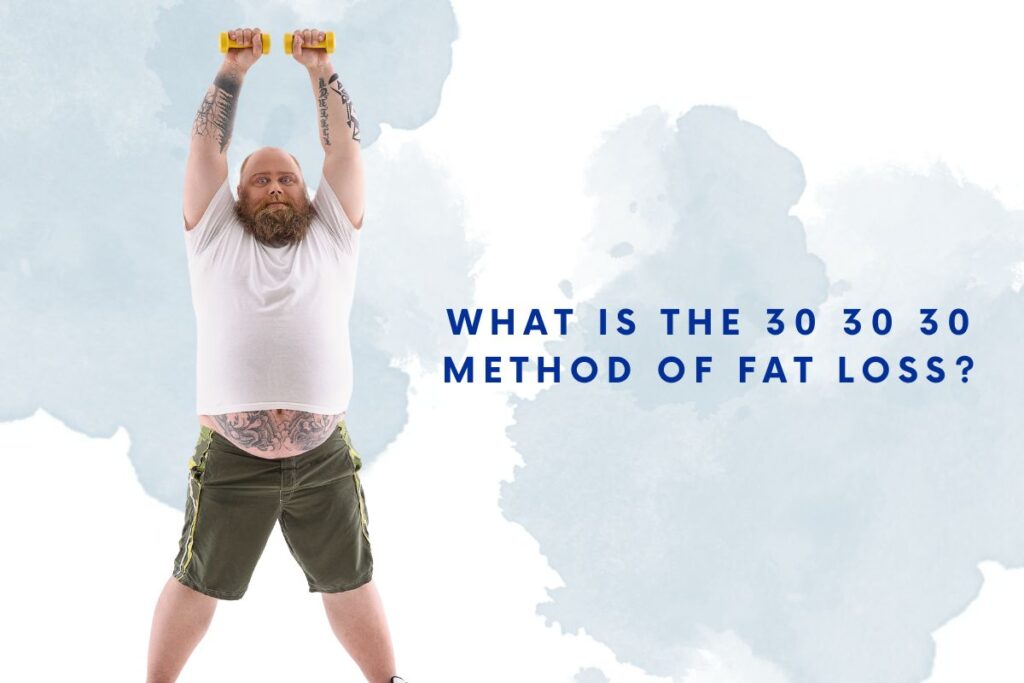In the ever-evolving landscape of diets and fitness trends, new methods constantly emerge, promising efficient and sustainable fat loss. One such concept that has recently gained significant traction, especially on social media platforms, is the “30-30-30 method.” Championed by figures like Gary Brecka and often discussed within biohacking communities, this approach offers a seemingly straightforward framework for kicking off your day with a metabolic boost aimed at optimizing fat burning.
What is the 30 30 30 Method of Fat Loss?
So, what exactly does the 30-30-30 method entail? It’s surprisingly simple, revolving around three key components to be executed within the first 30 minutes of waking:
- 30 Grams of Protein: The first “30” dictates consuming 30 grams of protein within 30 minutes of waking up. The source of this protein can vary widely, from eggs and Greek yogurt to a protein shake or lean meats. The emphasis is on hitting that protein target early in the day.
- 30 Grams of Fiber (Implied/Adjusted): While originally, some interpretations mentioned 30 grams of fiber, this is often a miscommunication or an aspirational target. A more realistic and commonly adopted interpretation is to ensure your breakfast is rich in fiber, aiming for a significant amount (e.g., 5-10 grams) rather than a rigid 30 grams, which can be challenging to achieve in a single meal without specific supplements or highly fibrous foods. Some interpretations also replace this with 30 grams of healthy fats or simply focus on making the meal balanced and high in fiber. For the purpose of this blog, we’ll lean into the widely accepted protein and low-intensity cardio aspects.
- 30 Minutes of Low-Intensity Steady State (LISS) Cardio: The final “30” involves engaging in 30 minutes of low-intensity cardiovascular exercise immediately after consuming your protein-rich breakfast. This typically means maintaining a heart rate around Zone 2 (roughly 60-70% of your maximum heart rate), where you can comfortably hold a conversation without being out of breath. Examples include a brisk walk, a gentle cycle, or an elliptical session.
The Rationale Behind the Method:
The 30-30-30 method isn’t just arbitrary numbers; it’s grounded in several physiological principles aimed at optimizing your body’s fat-burning capabilities, particularly in the morning:
- Protein for Satiety and Muscle Preservation: Consuming protein early helps to stabilize blood sugar, reduce cravings throughout the day, and increase satiety. Protein also has a higher thermic effect of food (TEF), meaning your body burns more calories digesting it compared to carbs or fats. Furthermore, adequate protein intake is crucial for preserving muscle mass, which is metabolically active and important for long-term fat loss.
- Morning Fasted-ish State for Fat Oxidation: While you’ve consumed protein, performing LISS cardio after a relatively light, protein-focused meal (rather than a carb-heavy one) means your body’s glycogen stores aren’t fully topped up. This encourages your body to tap into stored fat for energy during the low-intensity exercise. LISS in this state is believed to promote greater fat oxidation compared to higher intensity exercise, which relies more heavily on carbohydrates.
- Blood Sugar Regulation: Starting the day with protein helps to prevent rapid blood sugar spikes often associated with carb-heavy breakfasts. Stable blood sugar can reduce subsequent cravings and insulin spikes, which are conducive to fat storage.
- Building a Consistent Routine: The method provides a clear, actionable routine for the start of the day. Consistency is a cornerstone of any successful fat loss strategy, and establishing healthy morning habits can positively impact dietary and activity choices throughout the rest of the day.
Is it a Magic Bullet?
While the 30-30-30 method offers a compelling framework, it’s crucial to understand that it’s not a magic bullet. Fat loss is a complex process influenced by overall calorie intake, consistent exercise, sleep quality, stress levels, and individual metabolism.
- Overall Calorie Deficit Still Matters: This method helps optimize how you burn calories, but you still need to be in a caloric deficit over the entire day to lose fat.
- Sustainability: Can you realistically maintain this routine every day? Find variations that work for you.
- Individual Variation: What works perfectly for one person might need tweaking for another. Listen to your body.
The 30-30-30 method presents an intriguing and scientifically plausible way to jumpstart your metabolism and lean into fat burning early in the day. By prioritizing protein and low-intensity movement after waking, it provides a structured approach that can significantly contribute to a holistic weight management strategy. If you’re looking for a fresh way to approach your mornings and optimize your fat loss journey, it’s certainly worth exploring, perhaps after consulting with a healthcare professional or registered dietitian.



